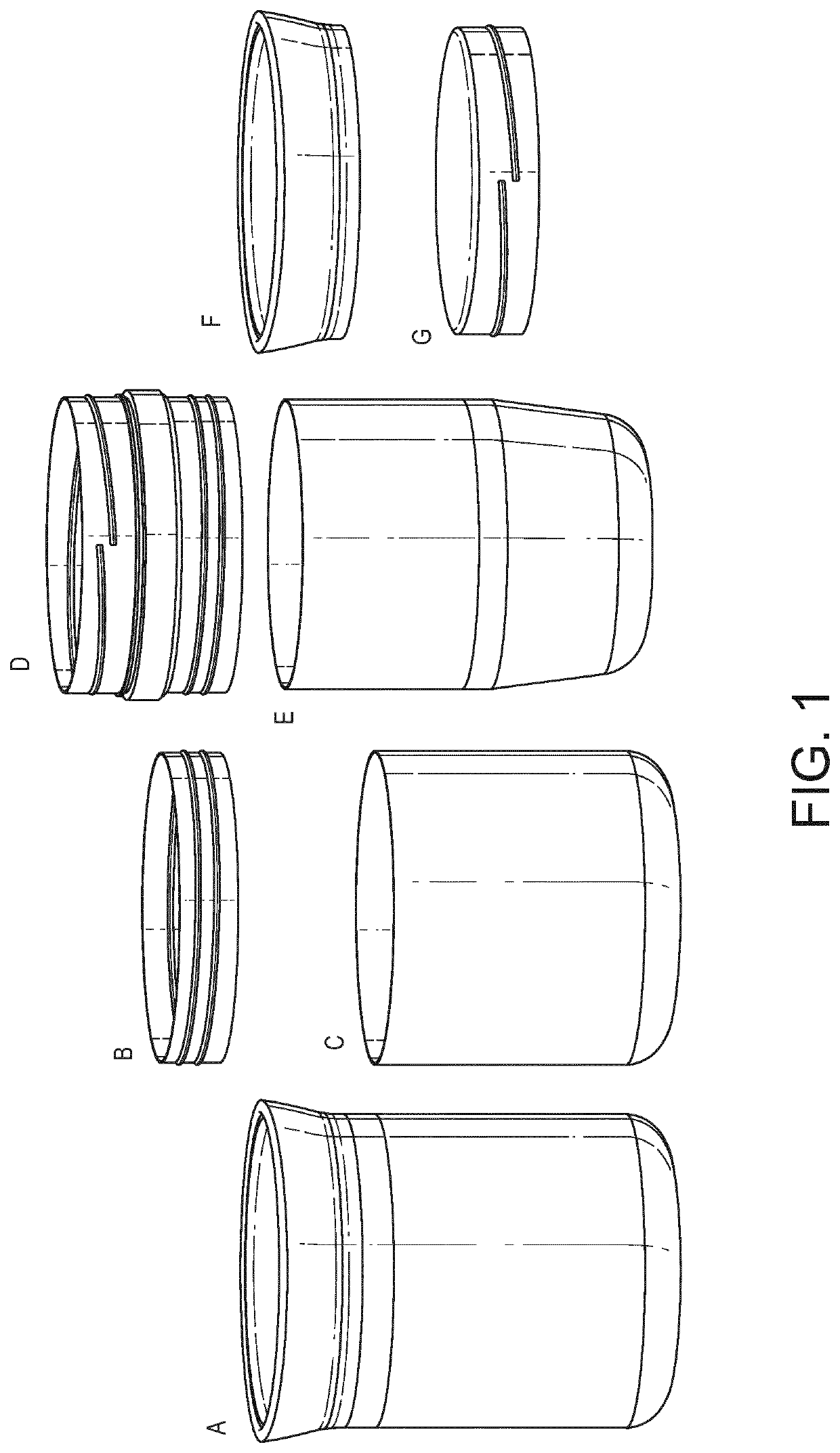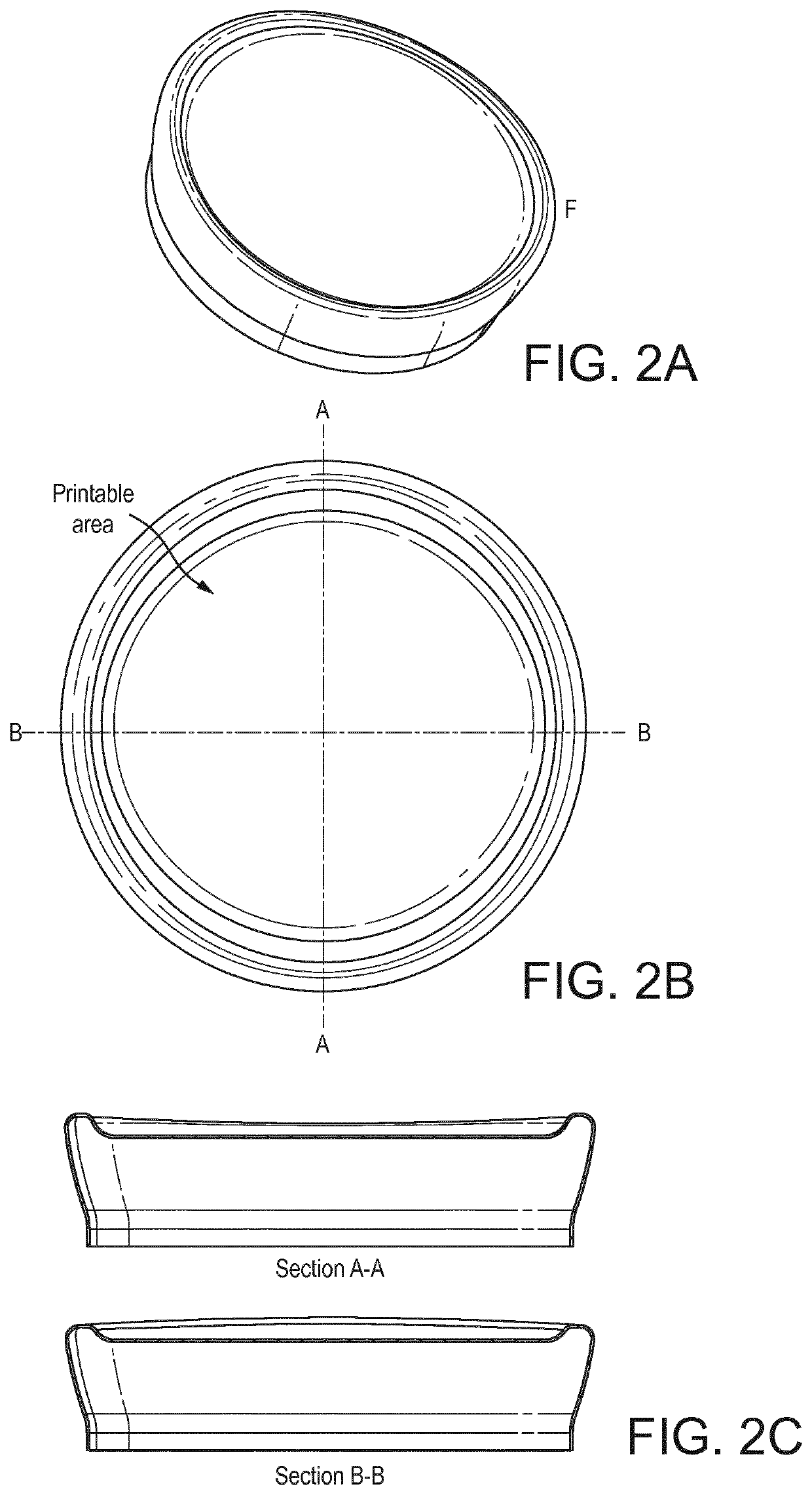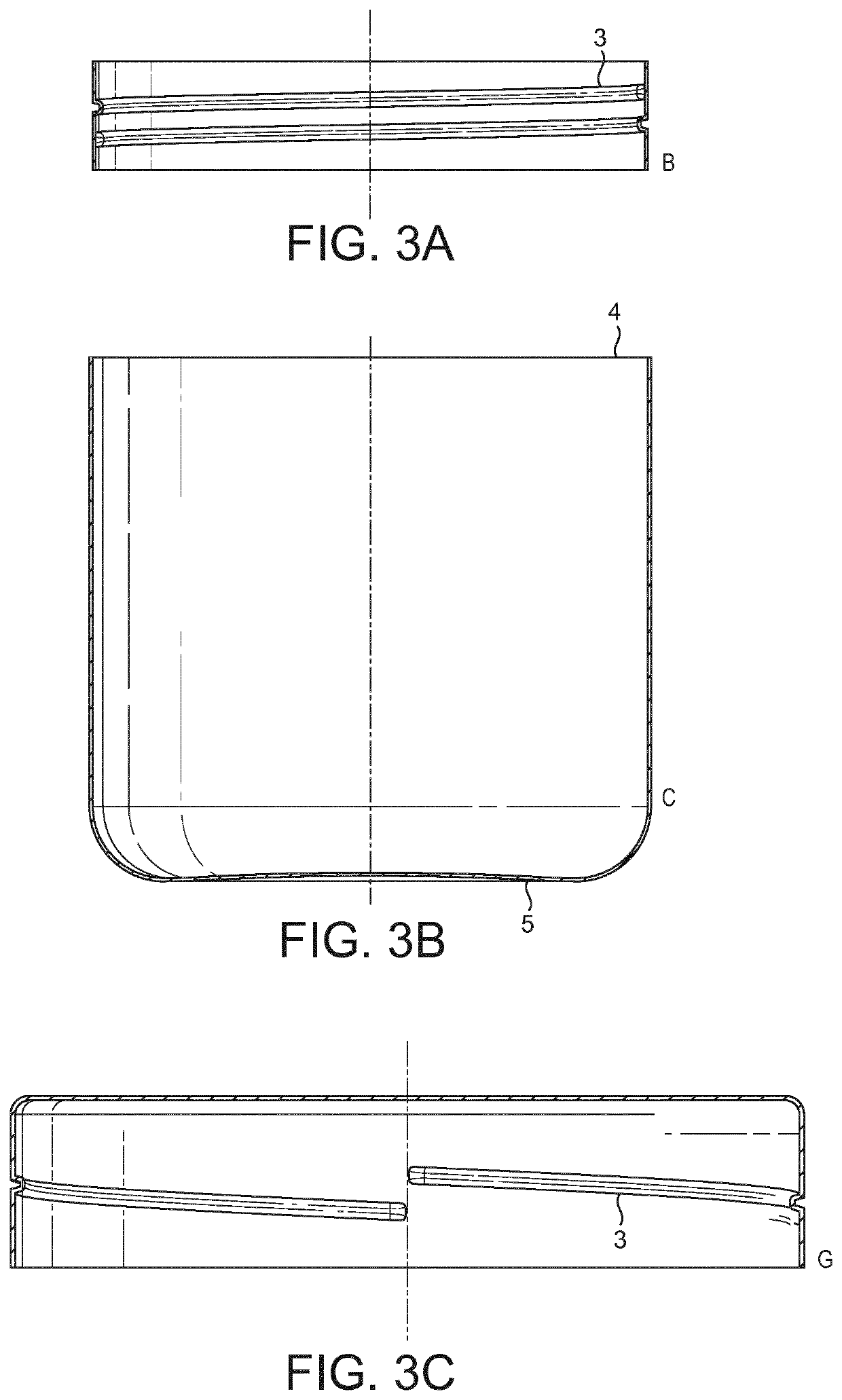Reusable container for frozen products
a technology for reusable containers and frozen products, applied in the field of reusable food packaging, can solve the problems of inability to reuse, difficult scooping, and inability to reuse packaging materials, etc., and achieve the effects of reducing the energy required for freezing, reducing the waste of frozen food compositions, and reducing the waste of freezing and shipping
- Summary
- Abstract
- Description
- Claims
- Application Information
AI Technical Summary
Benefits of technology
Problems solved by technology
Method used
Image
Examples
example 1
[0052]FIG. 1 is an exploded perspective view of a container according to the invention. FIG. 1 shows a container (A) according to the invention comprising a first container (E), a first lid (F), a first jacket (C), and fastening means (B), (D) and (G).
[0053]FIG. 1 shows a container (A) according to the invention wherein the parts thereof are assembled. The fastening means (B) is arranged inside the first jacket (C). The fastening means (D) arranged on the outside of the first container (E) and the fastening means (G) is arranged in the side the first lid (F). In the assembled position, the first jacket (C) is attached to the first container (E) by means of fastening means (B) and (D) and the first lid is attached to the first container (E) by means of the fastening means (D) and (G).
[0054]The fastening means in FIG. 1 are shown as separate parts. However, the fastening means may be integrated parts of the first container, the lid and the first jacket respectively. The fastening mean...
example 2
[0065]FIG. 5 is a principle drawing showing the method of supply and re-use of the containers according to the invention.
[0066]The method comprises providing a first container and / or a first lid (Step 102). The method comprises dispensing at least one comestible ingredient / food composition into the first container preferably from one or more nozzles 21 (Step 104). The first container can be provided as part of a plurality of containers, and preferably the at least one frozen composition ingredient is dispensed into each of the plurality of containers. A lid is then positioning on the first container containing the frozen composition (Step 106). The method can comprise providing printing indicia on at least one of the first lid and / or the first container containing the food composition; the indicia can comprise at least one of a batch code or an expiry date (Step 108). In the next step of the method, the first container with the first lid thereon and the at least one food composition...
example 3
[0070]FIG. 6 shows the temperature distribution in the container according to the invention over time. From the same starting point, the bottom of the containers show a slower increase in temperature versus the temperature at the top of the container.
[0071]The temperature distribution was measure on a container according to the invention. A container according to the invention, comprising bulk vanilla ice cream, was provided with one temperature probe taped to the wall approx. 2 cm from the top, and another taped to the bottom. Sensor surfaces faced inward and was placed in meltdown analyser chamber with a constant temperature of 22° C. The position of the upper wall temperature probe 8 and the bottom temperature probe 9 are shown in FIG. 4.
[0072]It was found that warming was slower at the bottom of the container provided by the insulation properties of the container and the direct abutting portions of the first container and the jacket, provides an ability of the container to deliv...
PUM
 Login to View More
Login to View More Abstract
Description
Claims
Application Information
 Login to View More
Login to View More - R&D
- Intellectual Property
- Life Sciences
- Materials
- Tech Scout
- Unparalleled Data Quality
- Higher Quality Content
- 60% Fewer Hallucinations
Browse by: Latest US Patents, China's latest patents, Technical Efficacy Thesaurus, Application Domain, Technology Topic, Popular Technical Reports.
© 2025 PatSnap. All rights reserved.Legal|Privacy policy|Modern Slavery Act Transparency Statement|Sitemap|About US| Contact US: help@patsnap.com



